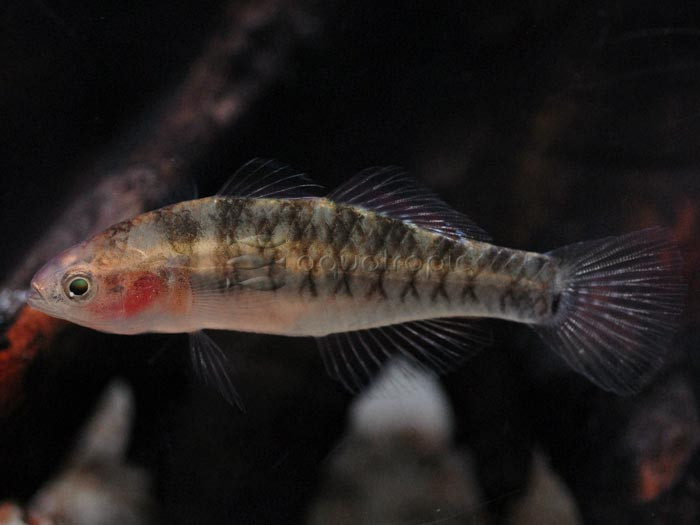Empire Gudgeon (Hypseleotris compressa)

There are two very different types of fish known commonly as gudgeons. One belongs to the minnow family Cyprinidae, while the other is a close relative of the gobies and is classified separately in the family Eleotridae. To understand why this is, we have to take a quick detour into some scientific etymology. Gobio is a genus of minnow and Gobius is a genus of goby, and both obviously share a similar linguistic origin in Latin. These fishes are both found in Europe, and so the French (as they tend to do) gave them a different, but similar, name... “goujon”. And form “goujon” we get “gudgeon”.
And while this might seem like a bit of unnecessary fish trivia, it is perhaps a bit helpful when considering a fish like the Empire Gudgeon (Hypseleotris compressa). It belongs to the Eleotridae, which means that even though it is very goby-like in appearance and behavior, it isn’t quite a goby… and so it seems fitting that it should be a “gudgeon” instead. For those uninitiated in fish morphology, explaining what precisely separates these two groups is more trouble than it’s worth. The most notable difference can be seen in the shape of the pelvic fins, which tend to be fused into a single fin among gobiids and separate with the eleotrids, but exceptions do exist, and more reliable diagnostic traits occur in other parts of the skeleton.
There are currently sixteen recognized species in Hypseleotris, but only H. compressa seems to be regularly available to aquarists. It originates from the coastal streams of Northern and Eastern Australia, as well as nearby portions of Papua New Guinea. The adults are primarily freshwater fishes, but their breeding strategy involves the newly hatched larvae drifting out into the ocean to develop before ultimately returning back upstream. For this reason, this species is actually quite salt tolerant, and even the adults are said to adapt to fully saline conditions. This potentially makes the Empire Gudgeon an intriguing choice for a brackish aquarium.
Fully grown specimens can top out at around five inches in length, making this a robust addition to a medium-sized fish tank. Males are particularly flamboyant when in their breeding colors, developing a bright red hue across the head and fins, accented by thick black and white bands. Females and juveniles (which tend to be those most available through the aquarium trade) are more staid in appearance, and sexing can be difficult without the male coloration being present. For this reason, many overlook this fish, failing to appreciate the splendors it offers in maturity. For those with the space, a group can be kept together, which will encourage the males to develop their full vibrancy as they display towards opposite sex and chase away any potential rivals. Be sure to include adequate cover for subordinate males to disappear when chased. With a healthy diet of frozen foods, you’ll likely see clutches of eggs start to appear on flat surfaces, but, unless placed into brackish water and fed live foods, the juveniles will ultimately fail to develop.